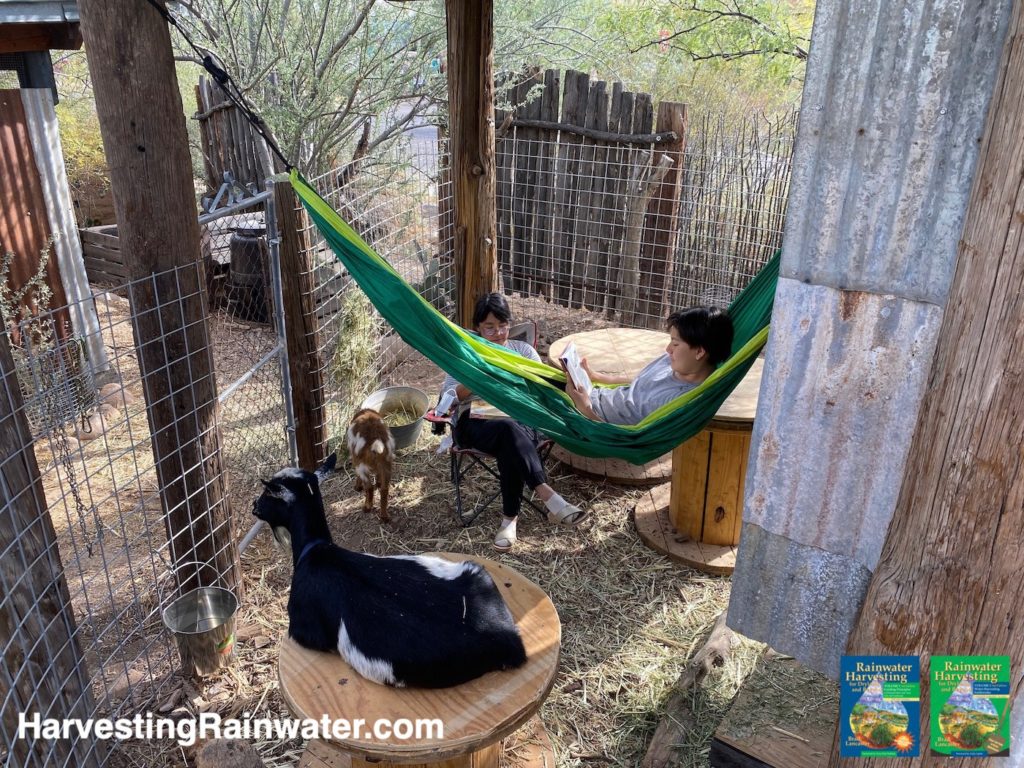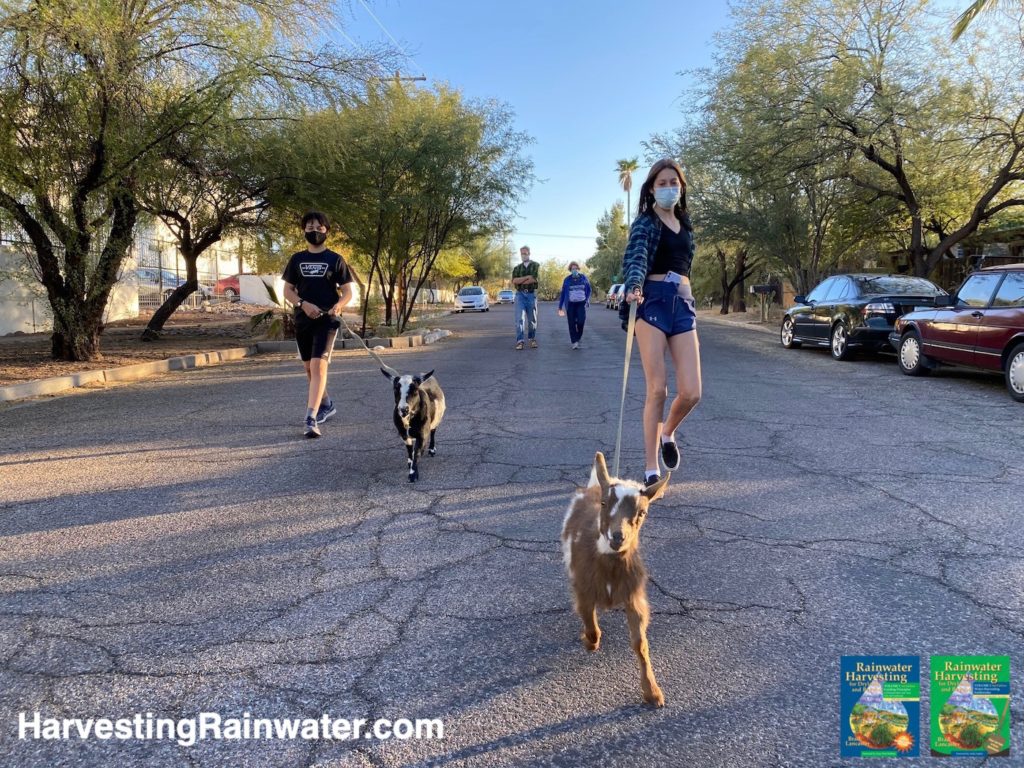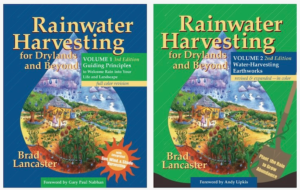Good & Bad Plants for Goats in the Southwest U.S. & Northern Mexico
by Brad Lancaster
www.HarvestingRainwater.com

Photo credit: Brad Lancaster
Why buy all food or materials for shade structures for your goats or other livestock when you can grow many of these resources and more?
Plants native to your area and your site’s microclimates are the best since they are best adapted to your local conditions, and won’t need supplemental irrigation once established. Passively harvest rainwater and/or greywater for them and they won’t just survive – they will thrive!
The goats will let you know what they like and don’t like when you observe them browsing in the wild. But you must be more cautious in confined spaces, like a pen or fenced pasture, where the goats could over eat toxic plants if non-toxic fodder gets low.
Check out this list of
Good & Bad Plants for Goats
for guidance.
We supplement our city goats’ feed with what they browse on neighborhood walks (making sure they don’t over browse any desired plants, so we maintain optimal health of the neighborhood forests).
Check out our community forestry efforts that grow and steward fodder for people, livestock (including bees), and wildlife at www.DunbarSpringNeighborhoodForesters.org.

Check out www.DunbarSpringNeighborhoodForesters.org for our community efforts growing and stewarding fodder for people, livestock, and wildlife in the public rights-of-ways.
Photo credit: Brad Lancaster
We often prune the vegetation alongside public pathways in our neighborhood to maintain a required minimum clear access of 7-foot height and 5-foot width. This encourages more folks to walk, bicycle, and wheel along the forest paths — which improves health and reduces crime as there are more friendly eyes on the forest and street.
In the past we cut up those pathway prunings and used them as fertility-building, water-conserving mulch within water-harvesting basins within the neighborhood forests. Now, we also bring some of the prunings of plants good for goats to our goat pen, where goats Lyric and Luke happily munch away, then transform those prunings into fertile goat droppings we compost and redisperse in the neighborhoods’ food forests – all of which collaborates with, and contributes to, the soil-carbon sponge.
Additionally, we have surrounded the goat pen in our yard with native, edible plantings that grow to shelter and feed the goats, while protecting the trunks and main branches of the plants from constant nibbling.
Passively-harvested water is the primary irrigation source of all the plantings.
For more on that see the full-color editions of my books Rainwater Harvesting for Drylands and Beyond, available at deep discount direct from me the author at https://www.harvestingrainwater.com/shop/
Local source of organically-grown hay
For those in the Tucson, Arizona area, a great source of organically-grown hay is the San Xavier Farm Cooperative

